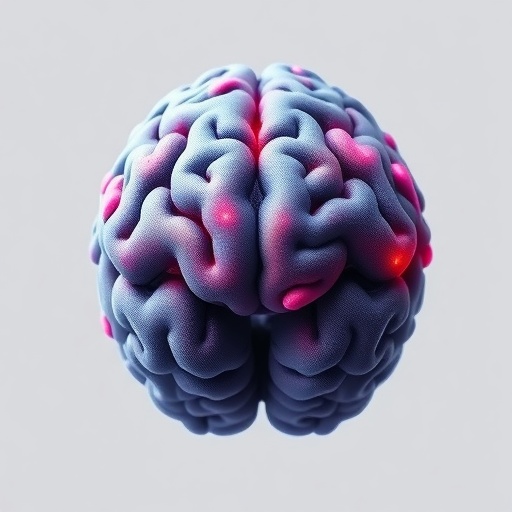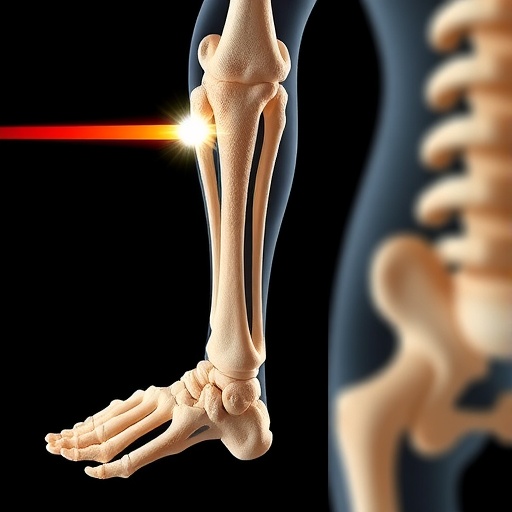In a groundbreaking study published by Belloy et al. in Nature Neuroscience (2025), researchers have unveiled a compelling link between chronic infection, persistent inflammation, and cognitive decline mediated through epigenetic DNA damage signaling in neurons. The study focuses on the parasitic infection caused by Toxoplasma gondii, a ubiquitous protozoan known to establish lifelong latent infections in mammalian hosts, including humans. This work sheds new light on the molecular cascades initiated by chronic inflammation, particularly the role of the cytokine interleukin-1 beta (IL-1β), in driving neuronal DNA damage responses that ultimately impair spatial memory. The findings introduce a novel and mechanistically detailed pathway that bridges infection-induced neuroinflammation with functional deficits in cognition—a topic of profound importance for understanding brain diseases linked to chronic inflammatory states.
Chronic inflammation has long been implicated in a diverse range of neurological diseases, from Alzheimer’s and Parkinson’s disease to mood disorders and cognitive impairments. Among the multitude of inflammatory mediators, IL-1β stands out as a pivotal cytokine often elevated in perpetually inflamed brain environments. While elevated cytokine levels have been correlated with cognitive decline, the precise molecular mechanisms by which IL-1β contributes to neuronal dysfunction have remained murky. Belloy and colleagues have now provided compelling evidence implicating IL-1β in inducing DNA double-strand breaks (DSBs) within hippocampal neurons—a novel form of epigenetic modulation that disrupts neural plasticity and memory formation.
Utilizing a well-characterized murine model of chronic Toxoplasma gondii infection, the study demonstrates that infected animals exhibit significant impairments in spatial memory tasks, akin to those observed in murine models treated chronically with IL-1β. This phenotypic convergence emphasizes the role of sustained IL-1β elevation in mediating the cognitive deficits seen post-infection. Importantly, genetic interventions that disrupt neuronal signaling pathways downstream of IL-1β reversed these memory impairments, providing direct causal evidence of the cytokine’s neurotoxic role in learning and memory.
.adsslot_C9KW4HE5BA{ width:728px !important; height:90px !important; }
@media (max-width:1199px) { .adsslot_C9KW4HE5BA{ width:468px !important; height:60px !important; } }
@media (max-width:767px) { .adsslot_C9KW4HE5BA{ width:320px !important; height:50px !important; } }
ADVERTISEMENT
At the cellular level, IL-1β was shown to engage and amplify DNA damage signaling cascades within neurons of the hippocampus—a brain region long-recognized for its central role in spatial navigation and memory encoding. Specifically, IL-1β leads to an increase in the phosphorylation of histone variant H2A.X, a well-known marker and mediator of DNA DSB repair and signaling. The phosphorylation of H2A.X (termed γ-H2A.X) flags damaged DNA and orchestrates the recruitment of the DNA repair machinery. However, in the context of chronic inflammation and persistent IL-1β exposure, this DNA damage response becomes maladaptive and leads to long-term alterations in chromatin architecture and gene expression patterns critical for neuronal function.
Mechanistically, the study highlights that the engagement of IL-1 receptors on neurons triggers intracellular pathways that promote DNA double-strand breaks and subsequent H2A.X phosphorylation. Mouse models devoid of neuronal H2A.X demonstrated remarkable resilience to the cognitive impairments caused by both chronic T. gondii infection and sustained IL-1β administration, underscoring the indispensable role of H2A.X-dependent DNA damage signaling in this pathological process. This discovery positions neuronal DNA DSBs not merely as markers of stress but as active contributors to synaptic and cognitive dysfunction.
The relationship between chronic infections and memory impairment is complex and multifactorial, but the present study presents a parsimonious molecular model tying together immunological signals, DNA damage response, and cognitive outcomes. The practical ramifications are broad, suggesting that chronic infections, or conditions that elevate IL-1β persistently, might induce a form of epigenetic memory disruption through sustained DNA damage signaling. This could potentially explain cognitive decline observed in chronic infections like HIV, chronic viral hepatitis, or even long COVID, where elevated cytokine expression is a hallmark.
Furthermore, the data implicate that therapeutic interventions targeting IL-1 signaling or the downstream DNA damage response pathways might ameliorate cognitive deficits associated with neuroinflammation. Pharmacological inhibition of IL-1 receptor pathways or molecules involved in H2A.X phosphorylation could represent exciting novel strategies to protect neuronal integrity and preserve cognitive function in chronically inflamed brains. This study thus opens new avenues in the design of neuroprotective treatments capable of dampening inflammation-induced neuronal epigenetic alterations.
Beyond memory impairment, persistent DNA damage signaling has been linked with cellular aging and neurodegeneration. Neurons are particularly vulnerable to DNA insults due to their post-mitotic nature and long lifespan. Accumulation of DSBs and defective repair mechanisms can lead to aberrant gene expression and neuronal death, contributing to progressive cognitive declines. By identifying the cytokine-driven nature of these DNA lesions, the findings directly connect immune dysregulation and neuronal genome instability, two major pathological themes in neurodegenerative research.
The use of Toxoplasma gondii infection as a model system is particularly compelling due to the parasite’s high prevalence worldwide and its known associations with neuropsychiatric disorders. Although many infections remain subclinical, the chronic low-grade inflammation they provoke might accumulate insidiously to affect brain function, as elucidated by this work. This model thus serves as a crucial experimental platform to translate basic molecular insights into potentially impactful human neurological contexts.
Importantly, the study utilized rigorous behavioral assays to assess spatial memory. The authors employed hippocampus-dependent maze tests to highlight how disruptions in neuronal IL-1 signaling and DNA repair mechanisms translate into tangible deficits in learning and navigation. These behavioral readouts link molecular disturbances with real-world cognitive functions, emphasizing the translational relevance of their findings and setting the stage for further behavioral phenotyping in other models of immune-driven cognitive impairment.
The elucidation of the interplay between IL-1β, neuronal DNA damage signaling, and cognitive dysfunction adds a critical piece to the puzzle of how peripheral immune challenges affect central nervous system integrity. Until now, much focus has been on microglial activation and synaptic pruning; this research elevates the importance of DNA damage pathways within neurons themselves as key downstream effectors in the pathogenesis of inflammation-induced cognitive deficits.
Moreover, the study’s demonstration that loss of neuronal H2A.X signaling confers protection against cognitive deficits without compromising baseline memory performance suggests a highly specific therapeutic target. This opens the door to precision medicine approaches where interventions aim to preserve neuronal genomic stability without broadly suppressing essential immune functions or DNA repair mechanisms in other tissues.
Future research building on these findings will likely delve deeper into the molecular intermediates linking IL-1 receptor activation with DNA DSB generation, potentially revealing novel enzymatic targets or chromatin modifiers involved. Additionally, exploring whether similar pathways are activated in human neuroinflammatory conditions could pave the way for biomarker development and clinical trials aimed at mitigating cytokine-driven cognitive decline.
Subject of Research:
The study investigates how chronic Toxoplasma gondii infection and persistent elevation of interleukin-1 beta (IL-1β) induce hippocampal DNA double-strand break signaling, leading to spatial memory deficits in mice.
Article Title:
Toxoplasma gondii infection and chronic IL-1 elevation drive hippocampal DNA double-strand break signaling, leading to cognitive deficits.
Article References:
Belloy, M., Schmitt, B.A.M., Marty, F.H. et al. Toxoplasma gondii infection and chronic IL-1 elevation drive hippocampal DNA double-strand break signaling, leading to cognitive deficits. Nat Neurosci (2025). https://doi.org/10.1038/s41593-025-02041-x
Image Credits:
AI Generated
Tags: Alzheimer’s disease and inflammationchronic inflammation and cognitive declinechronic inflammatory states and brain healthcytokine-induced neuronal dysfunctionDNA damage signaling in neuronsepigenetic effects on cognitioninterleukin-1 beta role in neuroinflammationlink between infection and cognitive deficitsneuroinflammation and brain diseasesParkinson’s disease cognitive impactsspatial memory impairment mechanismsToxoplasma gondii infection





